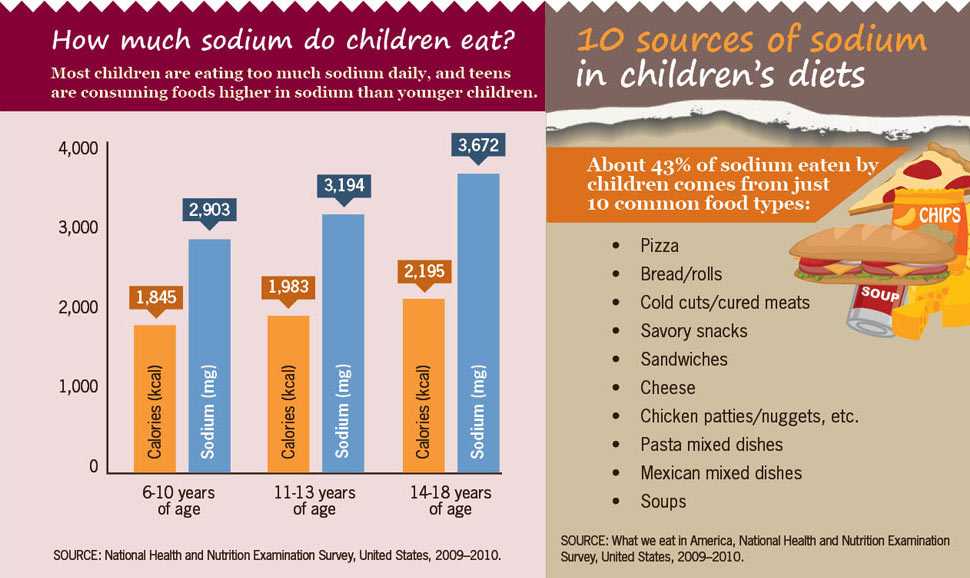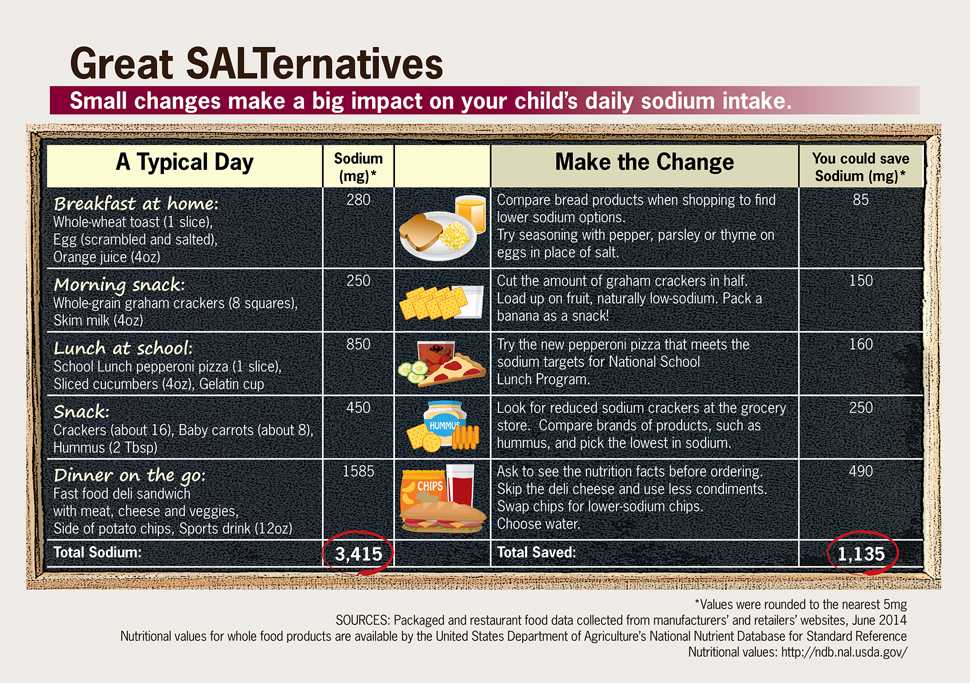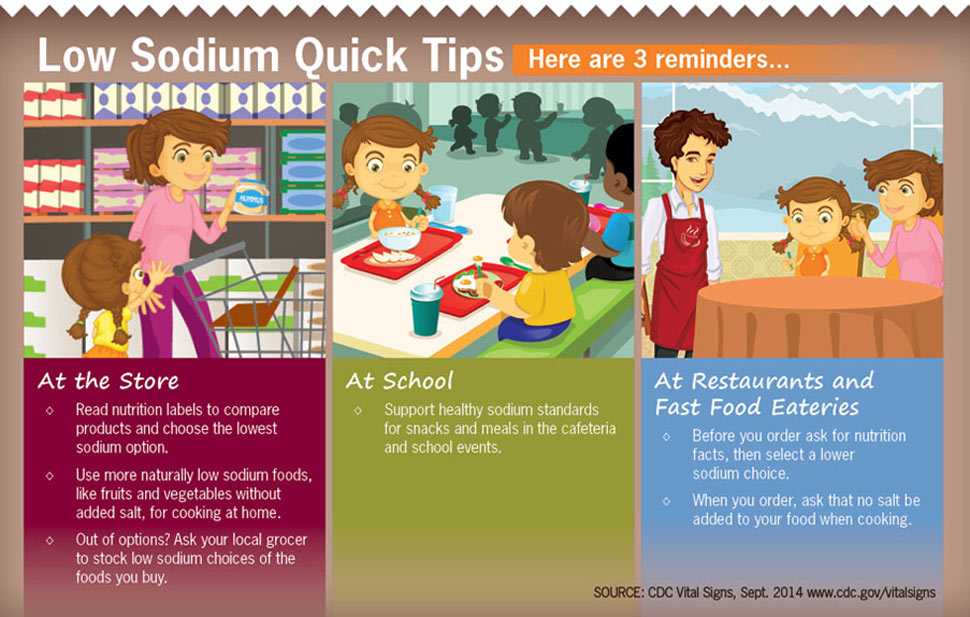Reducing Sodium in Children's Diets infographic

A Salty Generation
Bar graph showing average daily calorie and sodium intake for children 6-11 (1,845 kcal and 2,903 mg of sodium), children 11-13 (1,983 kcal and 3,194 mg of sodium), and teens aged 14-18 (2,195 kcal and 3,672 mg of sodium).
10 sources of sodium in children’s diets
List of the 10 common foods that contribute 43% of sodium to children’s diets
- Pizza
- Bread/rolls
- Cold cuts/cured meats
- Savory snacks
- Sandwiches
- Cheese
- Chicken patties/nuggets, etc.
- Pasta mixed dishes
- Mexican mixed dishes
- Soups
*Values were rounded to the nearest 5mg
Sources: Packaged and restaurant food data collected from manufacturers’ and retailers’ websites, June 2014
Nutritional values for whole food products are available by the United States Department of Agriculture’s National Nutrient Database for Standard Reference
Nutritional values: http://ndb.nal.usda.gov/

Great SALTernatives
A chalkboard graphic showing a typical day of sodium intake for children and what changes can be made to lower sodium.
Breakfast at home:
- Whole-wheat toast (1 slice),
- Egg (scrambled and salted),
- Orange juice (4oz)
- For 280 mg of sodium
- Instead compare bread products when shopping to find lower sodium options. Try seasoning with pepper, parsley or thyme on eggs in place of salt to save 85 mg of sodium.
Morning snack:
- Whole-grain graham crackers (8 squares),
- Skim Milk (4oz)
- For 250 mg of sodium
- Instead cut the amount of graham crackers in half. Load up on fruit, naturally low-sodium. Pack a banana as a snack to save 150 mg of sodium.
Lunch at school:
- School Lunch Pepperoni pizza (1 slice),
- Sliced cucumbers (4oz), Gelatin cup
- For 850 mg of sodium
- Instead try the new pepperoni pizza that meets the sodium targets for National School Lunch Program and save 160 mg of sodium
Snack:
- Crackers (about 16), Baby carrots (about 8),
- Hummus (2 Tbsp)
- For 450 mg of sodium.
- Instead look for reduced sodium crackers at the grocery store. Compare brands of products, such as hummus, and pick the lowest in sodium to save 250 mg of sodium
Dinner on the go:
- Fast food deli sandwich with meat, cheese and veggies, side of potato chips, Sports drink (12oz)
- For 1585 mg of sodium.
- Instead ask to see the nutrition facts before ordering. Skip the deli cheese and use less condiments. Swap chips for lower-sodium chip and choose water to save 490mg of sodium.
- Total sodium before 3,415 mg of sodium. Total saved 1,135 mg of sodium
*Values were rounded to the nearest 5mg Sources: Packaged and restaurant food data collected from manufacturers’ and retailers’ websites, June 2014 Nutritional values for whole food products are available by the United States Department of Agriculture’s National Nutrient Database for Standard Reference Nutritional values: http://ndb.nal.usda.gov/

Low Sodium Quick Tips
At the Store
- Read nutrition labels to compare products and choose the lowest sodium option.
- Use more naturally low sodium foods, like fruits and vegetables without added salt, for cooking at home.
- Out of options? Ask your local grocer to stock low sodium choices of the foods you buy.
At School
- Support healthy sodium standards for snacks and meals in the cafeteria and school events.
At Restaurants and Fast Food Eateries
- Before you order ask for nutrition facts, then select a lower sodium choice.
- When you order, ask that no salt be added to your food when cooking.
SOURCE: CDC Vital Signs, Sept. 2014 www.cdc.gov/vitalsigns
- Page last reviewed: September 9, 2014
- Page last updated: September 9, 2014
- Content source:
- National Center for Chronic Disease Control and Health Promotion, Division for Heart Disease and Stroke Prevention
- Page maintained by: Office of the Associate Director for Communications (OADC)


 ShareCompartir
ShareCompartir